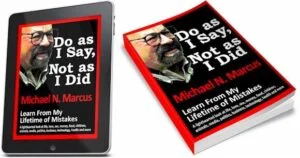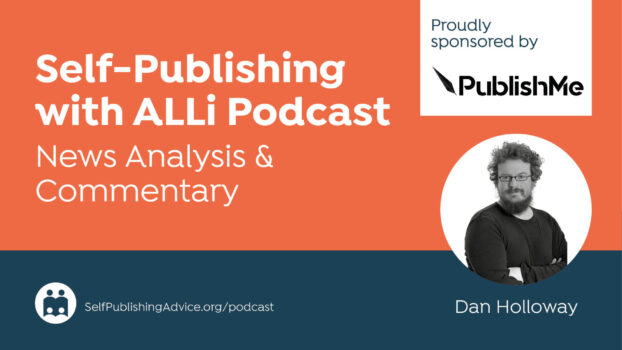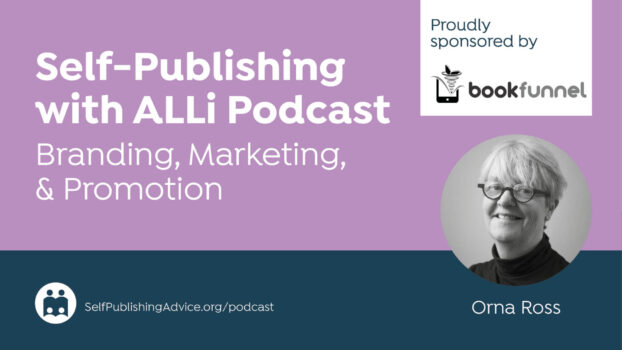“I initially refused to publish ebooks because I thought they were so damned ugly, and I resented my lack of control over what a reader saw,” says prolific US author Michael N Marcus, who has been writing books since 1977 and self-publishing them since 2008. Here he confesses how and why he eventually learned to stop worrying and love the ebook.
 Eventually I came around. I could no longer resist change, could no longer resist the preference of readers and could no longer ignore the potential income.
Eventually I came around. I could no longer resist change, could no longer resist the preference of readers and could no longer ignore the potential income.
Despite my distaste for ebook aesthetics (actually, the lack thereof), in time I embraced the e-format. I liked the speed, ease and low cost of of production and I loved the ability to include color at no cost, the hyperlinks and the ease of updating.
For the past few years I published e-only but I am publishing my newest book, Do As I Say, Not As I Did, nearly simultaneously as e and p. The ebook went on sale on Amazon on 1st June, and the paperback should be available in about a week.
Here are some observations about the production process (for ebooks with flowable text, not pages with fixed layout):
- It's much easier to format an ebook. I don't have to deal with page numbers, blind folios, recto or verso chapter starts, headers, footers, a numerical table of contents and more. There's much less that can go wrong.
- A pbook allows me to decide exactly where a graphic image will go, how big it will be, and whether text will wrap around it.
- A pbook requires letter spacing and word spacing to make it look right. This can take a long time.
- The printing cost – and potential profit – of a pbook depends on its page count. The profit on an ebook may vary with its file size but this is seldom an issue unless a book has lots of images.
- A good-looking p-page looks much better than a good-looking e-page.
- The cover of an ebook can be any shape I choose.
- It takes longer for a pbook to go on sale.
- If an ebook has lots of graphic images I have to reduce their file sizes to keep the book's overall file size as small as possible to avoid Amazon surcharges. I have to balance image quantity, image quality and image size.
- A chart or diagram that can have just black, white and shades of gray has to be designed with more care than one that can show colors. (Yes, I know that some ebook readers are monochromatic.)
- There is no need to balance the text on opposing pages of an ebook.
- There is no need to control widows and orphans in an ebook.
- It's much easier to do ‘fancy' stuff like drop caps in a pbook.
- With pbooks, I can spend days experimenting with different typefaces, and I enjoy doing that. With ebooks my choice of type is irrelevant.
Both e and p will probably be with us for a long time. It's important to publish what readers want, and to make each book as good as possible.
What are your views on print and ebooks? Please share in the comments section.
Our suggested tweet to help you share this post with other author-publishers:
“#Ebooks – love 'em or hate 'em, you have to embrace 'em – here's why: https://selfpublishingadvice.org/opinion-ebook/via @IndieAuthorALLi #Opinion”





I was a given a Kindle as a birthday present a few years ago by my sister and her reasoning was; ‘you’re a writer and you better get used to ebooks because whether you like them or not, people read ebooks.’ Like Michael I have come round to appreciating ebooks and have loads on my Kindle. In fact I ebook published my first book last year and it has been a great learning experience.
I can remember a friend in my writing group said almost the same thing. I don’t like them, so not going to do them. I told him then, “It doesn’t matter what you like. It matters what your readers want.”
I like that title. 🙂
Yes, Michael gives a balanced view of the ebook pros and cons. From the consumer’s point of view of course ebooks are much cheaper and far more rapidly delivered to you via your e-reader.
Is it just me, or does the title of this article remind anyone else of “How I Learned to Stop Worrying and Love the Bomb”?
That was why I chose it, Theo – we’re on the same wavelength! 😉